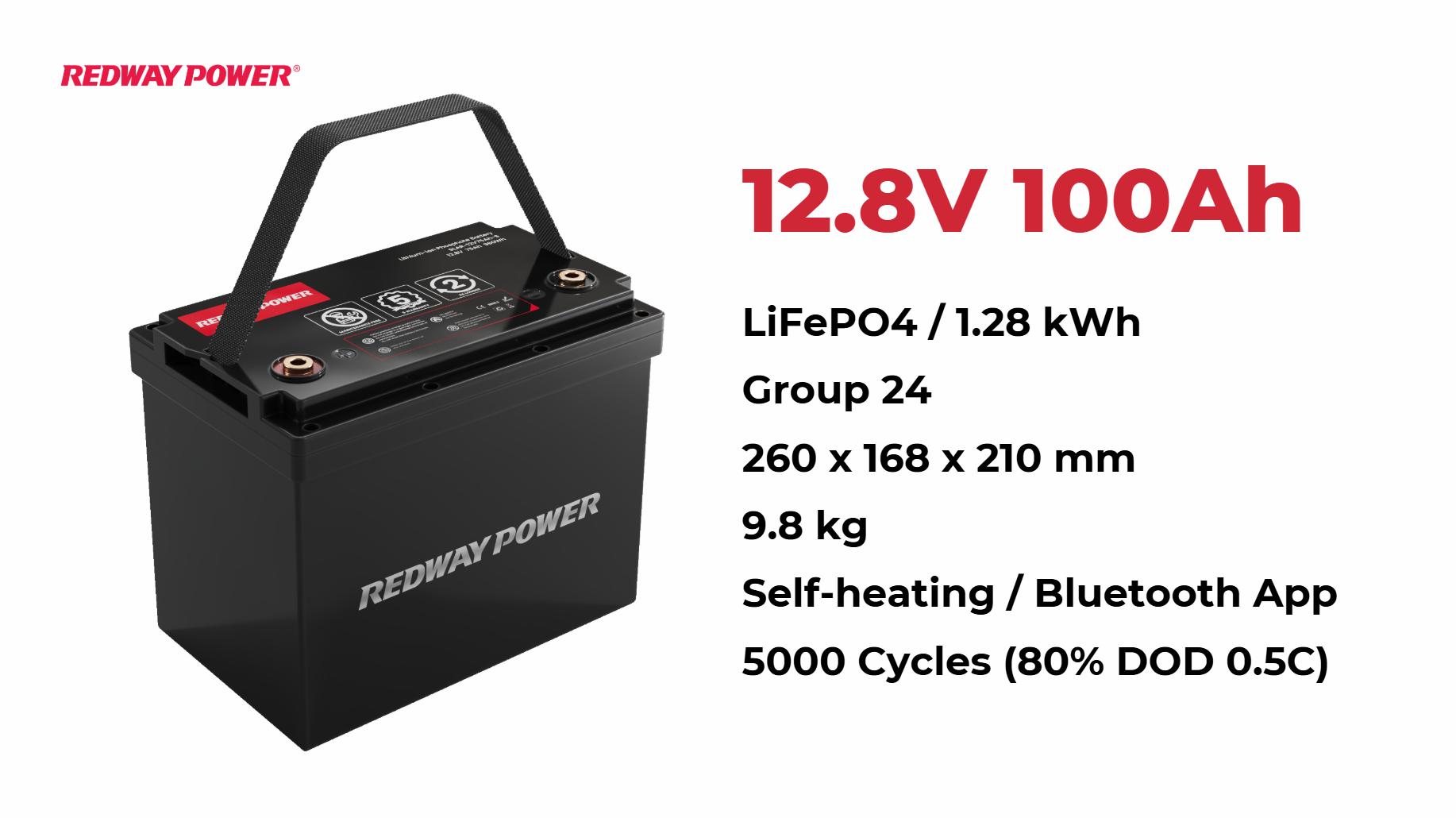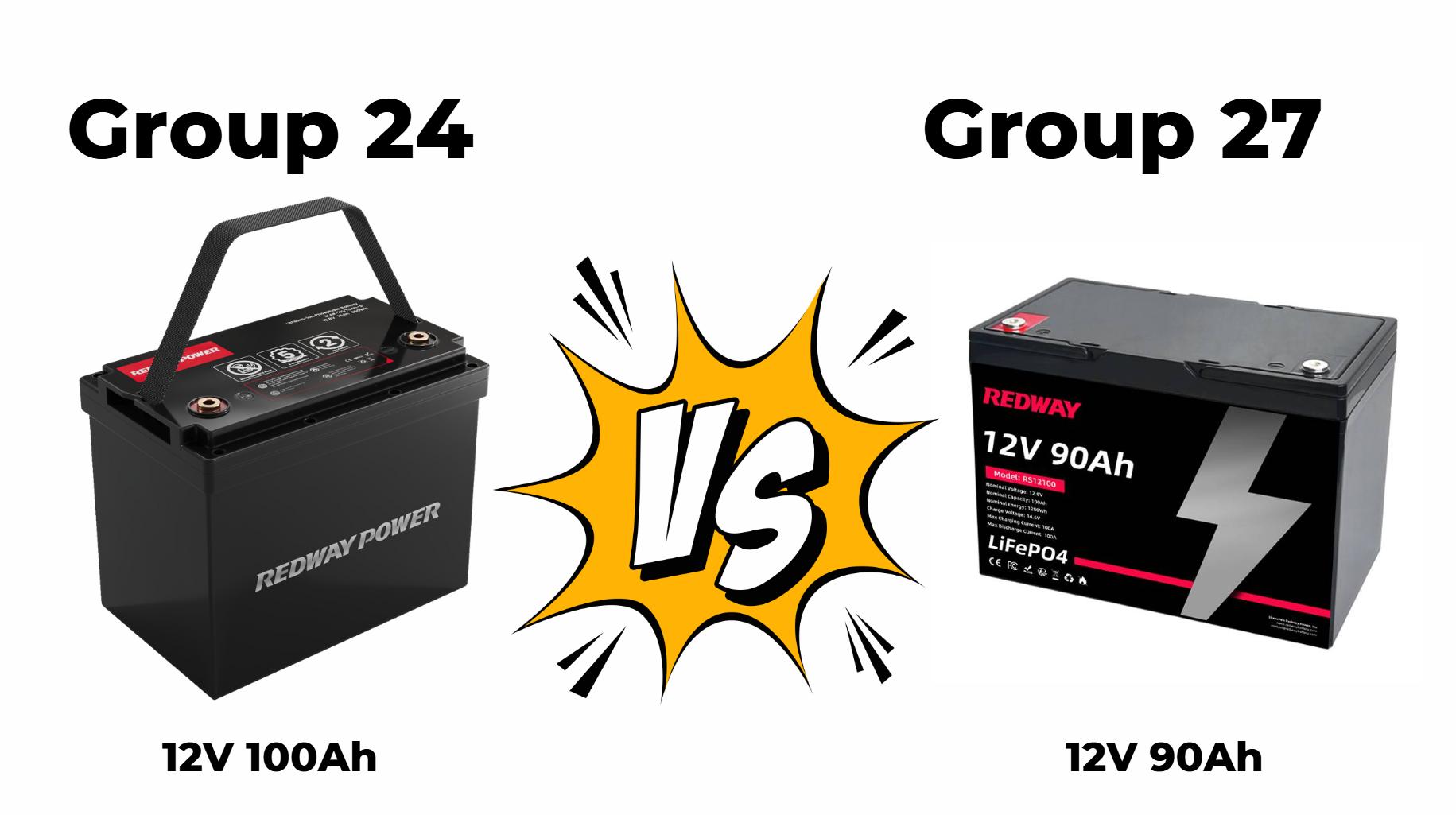Group 24 and Group 27 batteries are two of the most commonly used battery sizes in various applications, including automotive, marine, and recreational vehicles. Understanding the differences between these two groups is essential for selecting the right battery for your needs, particularly regarding size, capacity, and intended use.
Key Specifications and Differences
Physical Dimensions
The physical size of the batteries is one of the most significant differences:
Wholesale lithium golf cart batteries with 10-year life? Check here.
| Battery Type | Length (inches) | Width (inches) | Height (inches) |
|---|---|---|---|
| Group 24 | 10.25 | 6.75 | 8.875 |
| Group 27 | 12.5 | 6.75 | 9.375 |
While both batteries have the same width, the length difference can affect fitment in specific applications.
Capacity Ratings
Want OEM lithium forklift batteries at wholesale prices? Check here.
Capacity is another critical factor when comparing these batteries:
| Battery Type | Amp-Hour Rating |
|---|---|
| Group 24 | Approximately 70-85 Ah |
| Group 27 | Approximately 85-100 Ah |
The higher amp-hour rating of the Group 27 battery allows it to store more energy, making it suitable for applications requiring longer runtimes.
Performance Characteristics
Cold Cranking Amps (CCA)
Cold Cranking Amps measure a battery’s ability to start an engine in cold temperatures:
| Battery Type | CCA Rating |
|---|---|
| Group 24 | Around 600 CCA |
| Group 27 | Around 750 CCA |
A higher CCA rating indicates better performance in cold weather conditions, making the Group 27 battery a better choice for larger vehicles or extreme climates.
Reserve Capacity (RC)
Reserve capacity refers to how long a battery can run on its own power without being charged:
| Battery Type | Reserve Capacity (minutes) |
|---|---|
| Group 24 | Approximately 120 minutes |
| Group 27 | Approximately 150 minutes |
The increased reserve capacity of the Group 27 battery provides more power during outages or when the engine is not running.
Advantages of Group 27 Batteries
- Higher Capacity: The larger size allows for greater energy storage, making them ideal for high-demand applications.
- Longer Lifespan: Generally, they have a longer lifespan due to their higher capacity and better performance under load.
- Better Performance in Cold Weather: Higher CCA ratings make them suitable for starting larger engines in colder climates.
Common Applications for Each Battery Type
Understanding where each battery type excels can help you make an informed decision:
| Application | Preferred Battery Type |
|---|---|
| Small Cars | Group 24 |
| Trucks & SUVs | Group 27 |
| Marine Applications | Both |
| RVs | Both |
Group 24 batteries are often used in smaller vehicles where space is limited, while Group 27 batteries are favored in larger vehicles that require more power.
Cost Analysis of Group 24 vs. Group 27 Batteries
When considering cost, it’s essential to look at both initial investment and long-term value:
| Battery Type | Average Cost per Unit | Cost Over Lifetime (Assuming Usage) |
|---|---|---|
| Group 24 | $100 – $150 | Lower due to smaller capacity |
| Group 27 | $120 – $180 | Higher but offers better longevity |
While the upfront cost of a Group 27 battery may be higher, its longer lifespan and greater capacity can provide better value over time.

12v 100ah rv lithium battery factory oem
Maintenance Tips for Optimal Performance
To ensure that both types of batteries perform well over their lifespan:
- Regular Inspections: Check terminals for corrosion and clean them as needed.
- Proper Charging: Use an appropriate charger designed for your battery type to avoid damage.
- Storage Conditions: Store batteries in a cool, dry place to prevent degradation.
Latest News in Battery Technology
Recent advancements in battery technology focus on improving efficiency and sustainability across various types, including lead-acid batteries like Groups 24 and 27. Innovations such as enhanced recycling processes and new materials are being developed to reduce environmental impact while increasing performance.
Redway Expert Comment
“Choosing between a Group 24 and a Group 27 battery depends largely on your specific needs—whether it’s size constraints or power requirements. Always consider your vehicle’s specifications to ensure optimal performance.” – Automotive Battery Specialist
Frequently Asked Questions (FAQs)
What is the main difference between a Group 24 and a Group 27 battery?
The primary differences are size, capacity, and performance characteristics; the Group 27 battery is larger with a higher capacity than the Group 24.
Can I use a Group 27 battery instead of a Group 24?
In many cases yes, but ensure that your vehicle can accommodate the larger size.
How do I know which battery type I need?
Check your vehicle’s owner manual or consult with a professional to determine the appropriate group size based on your vehicle’s requirements.
Are there any maintenance tips specific to these batteries?
Regularly inspect terminals for corrosion, ensure proper charging practices, and store batteries in cool, dry places to extend their lifespan.
Know more:
group 24 battery weight
group 24 vs 27
battery group 24 vs 27






